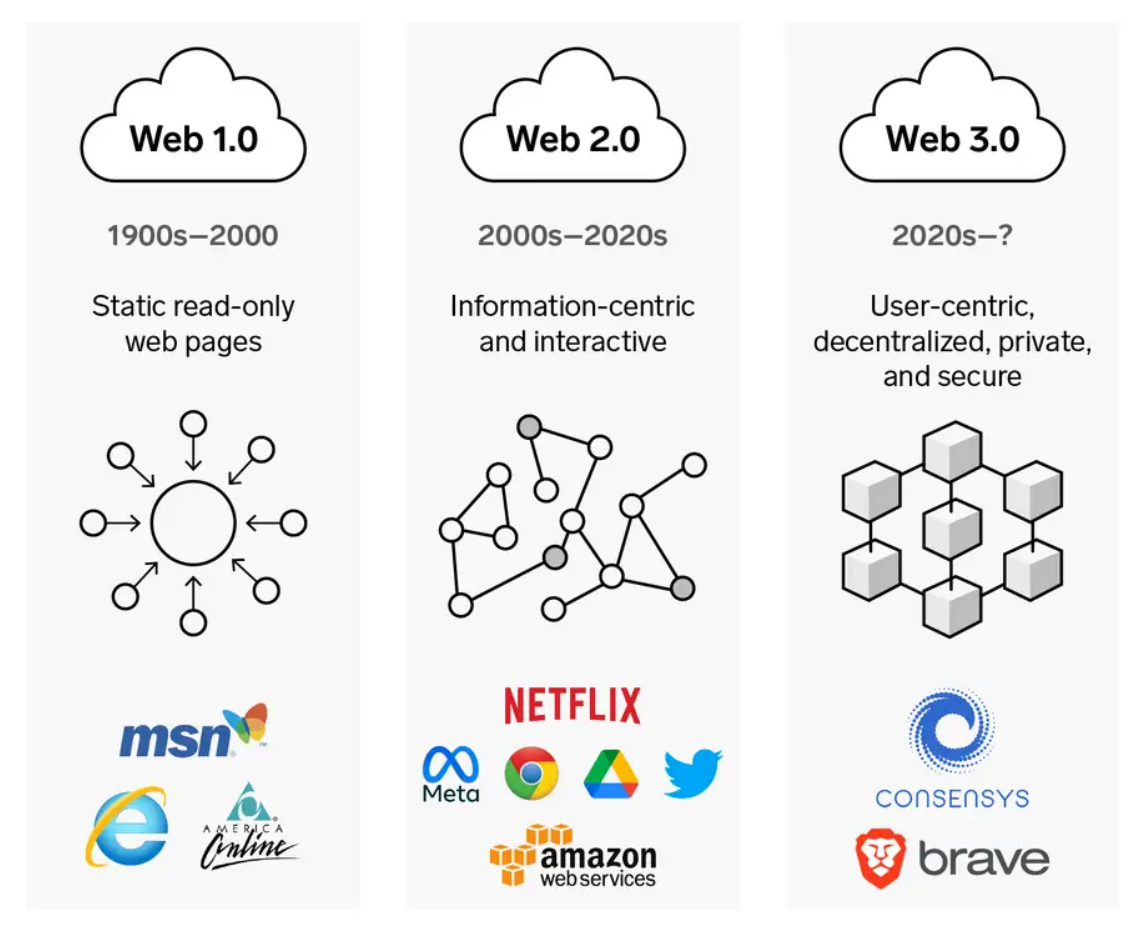In an age where the internet rules the world, it was only a matter of time before things like NFTs, Web3, cryptocurrencies, and the like infiltrated the music space. In this post, you’ll learn exactly what Web3 is, as well its relationship between music NFTs, royalties, and more. 👾
What is Web3?
Let’s talk basics…
Web3 is a term used to describe a new form of the internet that embraces decentralization and ownership. The evolution of the internet has been described in 3 phases:
- Web1 (“read-only”) // mainly static websites owned by companies, close to zero interaction between users. Example being Internet Explorer
- Web2 (“read-write”) // Instead of companies providing content to users, they also began to provide platforms to share user-generated content and engage in user-to-user interactions. (Example being Facebook / Social Media)
**As more people came online, a handful of top companies began to control a disproportionate amount of the traffic and value generated on the web. Web 2.0 also birthed the advertising-driven revenue model. While users could create content, they didn’t own it or benefit from its monetization.**
- Web3 (“read-write-own”) // Web3 has become a catch-all term for the vision of a new, better internet. At its core, Web3 uses blockchains, cryptocurrencies, and NFTs to give power back to the users in the form of ownership.
What about NFTs?
One very important aspect of Web3 is ownership of digital assets. The vehicle for this ownership are NFTs (aka Non-Fungible Tokens).
- “Non-fungible” is an economic term that you could use to describe things like your furniture, a song file, or your computer. However, these things are not interchangeable for other items because they have unique properties.
That being said, NFTs are the tokens that we can use to represent the ownership of these unique items. They let us “tokenise” things like art, collectibles, even real estate. The big thing about these (that you’ve probably heard a million times) is that they can only have one official owner at a time and are secured by the Ethereum blockchain – which means no one can modify the record of ownership or copy/paste a new NFT into existence.
Fungible items, on the other hand, CAN be exchanged because their value defines them rather than their unique properties.
For example: ETH or dollars are fungible because 1 ETH / $1 USD is exchangeable for another 1 ETH / $1 USD.
Got it?
What are some examples of these in action?
To help you visualize these, check out these real NFT use cases below:
How do royalties work with NFTs?
When creators sell their content, funds go directly to them. If the new owner then sells the NFT, the original creator can even automatically receive royalties. This is guaranteed every time it’s sold because the creator’s address is part of the token’s metadata – metadata which can’t be modified.
NFTs in Music
Musicians can utilize NFTs to release anything from songs to music videos to even concert tickets. They allow fans to invest in artists who they enjoy and believe in, while receiving benefits in return. Conversely, they allow artists to fund their music projects directly through the support of their fans.
- One way that musicians are upping the incentives for fans/investors to buy music NFTs is by offering holders special perks, and entrance to an exclusive community of fans.
- Another way musicians are utilizing Music NFTs is by offering a share of revenue generated from a song, helping create a true fan-centric ecosystem.
Music NFTs allow for artists and collaborators to receive payment via splits in a more transparent and frictionless fashion. With the new ability to receive royalties on every secondary sale of an NFT, this brings a significant new revenue stream for creators.
To wrap it all up…
Web3 is all about giving ownership to the users. Whether it’s gaming, music, or record keeping, this technology is translating across a growing number of industries. In the world of music and entertainment, creators can also use Web3 for ownership amongst many other facets such as secondary royalties, split transparency, concert tickets, and fan connection.



